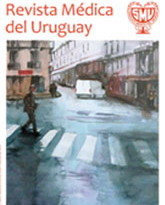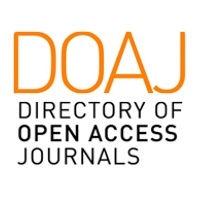Emerging and re-emerging infectious diseases
Updated information
Abstract
In the late 20th century, several different factors contributed to the appearance of emerging infectious diseases that had a great impact on public health. In general, these diseases are characterized by appearing for the first time, they rapidly increase in incidence in certain populations or geographical area, or they have been known for some time although they have disappeared for a long time.
A few infectious diseases like HIV/AIDS have persisted for several years, while others, after appearing, last limited periods of time.
Multiple factors, apart from the infectious agent, take part in the complex process that results in the emergence of an infectious disease. Thousands of potentially pathogenic microorganisms are constantly disseminated in new geographical areas, although just a few manage to survive and cause diseases, favored by social, economic, environment and ecologic factors.
This global phenomenon requires continuous epidemiological surveillance, with a national and regional infrastructure that enables an early alert upon these diseases that emerge or re-emerge.
References
(2) Jones KE, Patel NG, Levy MA, Storeygard A, Balk D, Gittleman JL, et al. Global trends in emerging infectious diseases. Nature 2007; 451(7181):990-3.
(3) Musser JM. Molecular population genetic analysis of emerged bacterial pathogens: selected insights. Emerg Infect Dis 1996; 2(1):1-17.
(4) Ewald PW. Guarding against the most dangerous emerging pathogens: insights from evolutionary biology. Emerg Infect Dis 1996; 2(4):245-56.
(5) Rocarniello VR. Emerging infectious diseases. J Clin Invest 2004; 113(6):796-8.
(6) Weissenbacher M, Salvatella R, Hortal M. El desafío de las enfermedades emergentes y reemergentes. Rev Med Urug 1998; 14(1):34-48.
(7) Hortal M, Medina Presentado JC. Virus Ebola: una emergencia mundial. An Facultad Med (Univ Repúb Urug) 2014; 1(2):84-90.
(8) Joint United Nations Programme on HIV/AIDS. The Gap Report. Ginebra: UNAIDS, 2014. Disponible en: http://www.unaids.org/sites/default/files/en/media/unaids/ contentassets/documents/unaidspublication/2014/ UNAIDS_Gap_report_en.pdf. Consulta: 31 agosto 2015.
(9) Uruguay. Ministerio de Salud Pública. Plan Nacional de Contingencia para una Pandemia de Influenza. Montevideo: MSP, 2006.
(10) Riquelme R, Rioseco ML, Bastidas L, Truncado D, Riquelme M, Loyola H, el al. Hantavirus pulmonary syndrome, Southern Chile, 1995-2012. Emerg Infect Dis 2015; 21(4):6-14.
(11) Beutin L. Emerging enterohaemorrhagic Escherichia coli, causes and effects of the rise of a human pathogen. J Vet Med Infect Dis Vet Public Health 2006; 53(7):299–305.
(12) Sumby P, Porcella SF, Madrigal AG, Barbian KD, Virtaneva K, Ricklefs SM, et al. Evolutionary origin and emergence of a highly successful clone of serotype M1 group a Streptococcus involved multiple horizontal gene transfer events. J Infect Dis 2005; 192(5):771–82.
(13) Boyce JM. Are the epidemiology and microbiology of methicillin-resistant Staphylococcus aureus changing? JAMA 1998; 279(8):623-4.
(14) Loo VG, Poirier L, Miller MA, Oughton M, Libman MD, Michaud S, et al. A predominantly clonal multi-institutional outbreak of Clostridium difficile-associated diarrhea with high morbidity and mortality. N Engl J Med 2005; 353(23):2442–9.
(15) Hansman D, Bullen MM. A resistant pneumococcus. Lancet 1967; 2:264-7.
(16) Organización Mundial de la Salud. Reunión del Grupo Consultivo Estratégico y Técnico de la OMS sobre resistencia a los antibióticos: resumen de su orientación y recomendaciones. Ginebra: OMS, 2014. Disponible en: http://www. who.int/drugresistance/stag_amr_report_to_dg_april_2014-es.pdf. Consulta: 31 agosto 2015.
(17) United States. The White House. Office of the Press Secretary. Executive order: Combating Antibiotic-Resistant Bacteria. September 18, 2014. Washington, DC: Office of the Press Secretary, 2014. Disponible en: https://www.whitehouse.gov/the-press-office/2014/09/18/executive-order-combating-antibiotic-resistant-bacteria. Consulta: 31 agosto 2015.
(18) World Health Organization. Antimicrobial resistance: global report on surveillance Ginebra: WHO; 2014. Disponible en: http://apps.who.int/iris/bitstream/10665/112642/1/ 9789241564748_eng.pdf?ua=1. Consulta: 31 agosto 2015.
(19) Halstead SB. Reappearance of Chikungunya, formerly called dengue, in the Americas. Emerg Infect Dis 2015; 21(4):5-12.
(20) World Health Organization. Antigenic and genetic characteristics of zoonotic influenza viruses and development of candidate vaccine viruses for pandemic preparedness. Geneva: WHO, 2014. Disponible en: http://www.who.int/influenza/vaccines/virus/201402_h5h7h9h10_vaccinevirusupdate.pdf. Consulta: 31 agosto 2015.
(21) Hause BM, Collin EA, Liu R, Huang B, Sheng Z, Lu W, et al. Characterization of a novel influenza virus in cattle and swine: proposal for a new genus in the Orthomyxoviridae family. IMBio 2014; 5(2):e00031–14. Disponible en: http://mbio.asm.org/content/5/2/e00031-14.full. Consulta: 31 agosto 2015.
(22) Midgley CM, Jackson MA, Selvarangan R, Turabelidze G, Obringer E, Johnson D, et al. Severe respiratory illness associated with enterovirus D68 - Missouri and Illinois,2014. MMWR Morb Mortal Wkly Rep 2014; 63(36):798-9. Disponible en: http://www.cdc.gov/mmwr/preview/mmwrhtml/ mm6336a4.htm. Consulta: 31 agosto 2015.
(23) World Health Organization. Summary of probable SARS cases with onset of illness from 1 November 2002 to 31 July 2003: based on data as of the 31 December 2003. Geneva: WHO, 2003. Disponible en: http://www.who.int/csr/sars/ country/table2004_04_21/en/. Consulta: 31 agosto 2015.
(24) Zaki AM, van Boheemen S, Bestebroer TM, Osterhaus AD, Fouchier RA. Isolation of a novel coronavirus from a man with pneumonia in Saudi Arabia. N Engl J Med 2012; 367(19):1814-20.
(25) Zhao J, Ragupathy V, Liu J, Wang X, Vemula SV, El Mubarak HS, et al. Nanomicroarray and multiplex next-generation sequencing for simultaneous identification and characterization of influenza viruses. Emerg Infect Dis 2015; 21(3):400-8.
(26) Zhou H, Haber M, Ray S, Farley MM, Panozzo CA, Klugman KP. Invasive pneumococcal pneumonia and respiratory virus co-infections. Emerg Infect Dis 2012; 18(2):294-7.
(27) O’Brien KL, Walters MI, Sellman J, Quinlisk P, Regnery H, Schwartz B, et al. Severe pneumococcal pneumonia in previously healthy children: the role of preceding influenza infection. Clin Infect Dis 2000; 30(5):784-9.
(28) Riverón Corteguera RL. Enfermedades emergentes y reemergentes: un reto del siglo XXI. Rev Cubana Pediatr 2002; 74(1):7-22.
(29) Wilson ME. Travel and the emergence of infectious diseases. Emerg Infect Dis 1995; 1(2):39-46.
(30) Rodríguez-de Marco J, coord. Teleconferencia Nacional 24 de mayo de 2012: situación de la TB en Uruguay, entre la eliminación y la re-emergencia. Montevideo: CHLA-EP, 2012. Disponible en: http://www.msp.gub.uy/sites/default/files/archivos_adjuntos/TBC_2012%20(1).pdf. Consulta: 31 agosto 2015.
(31) González Arias M, Dall´Orso P, Cantirán E, Verón A, Quian J. Tos convulsa: estudio clínico y de laboratorio de una enfermedad reemergente en lactantes pequeños y adolescentes. Rev Med Urug 2010; 26(3):154-60 .
(32) Farmer P. Social inequalities and emerging infectious diseases. Emerg Infect Dis 1996; 2(4):259-69.
(33) Hortal M, Estevan M, Laurani H, Iraola I, Meny M; Paysandú/Salto Study Group. Hospitalized children with pneumonia in Uruguay: pre and post introduction of 7 and 13-valent pneumococcal conjugated vaccines into the National Immunization Program. Vaccine 2012; 30(33):4934-8.
(34) Uruguay. Academia Nacional de Medicina. Academia Nacional de Veterinaria. Academia Nacional de Medicina de Buenos Aires. Academia Nacional de Agronomía y Veterinaria de Argentina. III Encuentro Rioplatense sobre conceptos de salud y zoonosis, la rabia. Montevideo, Uruguay 7 de noviembre 2014.
(35) Casas Olascoaga R. Brucelosis bovina. Veterinaria (Montev.) 2008; 43(170):11-23.
(36) Delfraro A. Hantavirus en Uruguay: identificación de reservorios naturales y caracterización molecular de genotipos circulantes. Tesis de Doctorado, no publicada. Montevideo: PEDECIBA; 2006.
(37) Weissenbacher MC, Cura E, Segura EL, Hortal M, Baek LJ, Chu YK, et al. Serological evidence of human Hantavirus infection in Argentina, Bolivia and Uruguay. Medicina (B Aires) 1996; 56(1):17-22.
(38) Peluffo Berruti CA. Superpoblación: ética ambiental y enfermedades emergentes. En: Durán H, Fernández Tresguerres J, coords. Superpoblación: Encuentro con las Academias Nacionales de Medicina Ibero-Americanas, de Portugal y Reales Academias Españolas de Distritos (Madrid, 17-19 noviembre 1997). Madrid: Real Academia Nacional de Medicina, 1998:467-74.
(39) Salveraglio C. Introducción. En: Organización Panamericana de la Salud. Staphylococcus aureus meticilino resistente: informe ateneo general. Montevideo: OPS, 2004.

This work is licensed under a Creative Commons Attribution-NonCommercial 4.0 International License.













